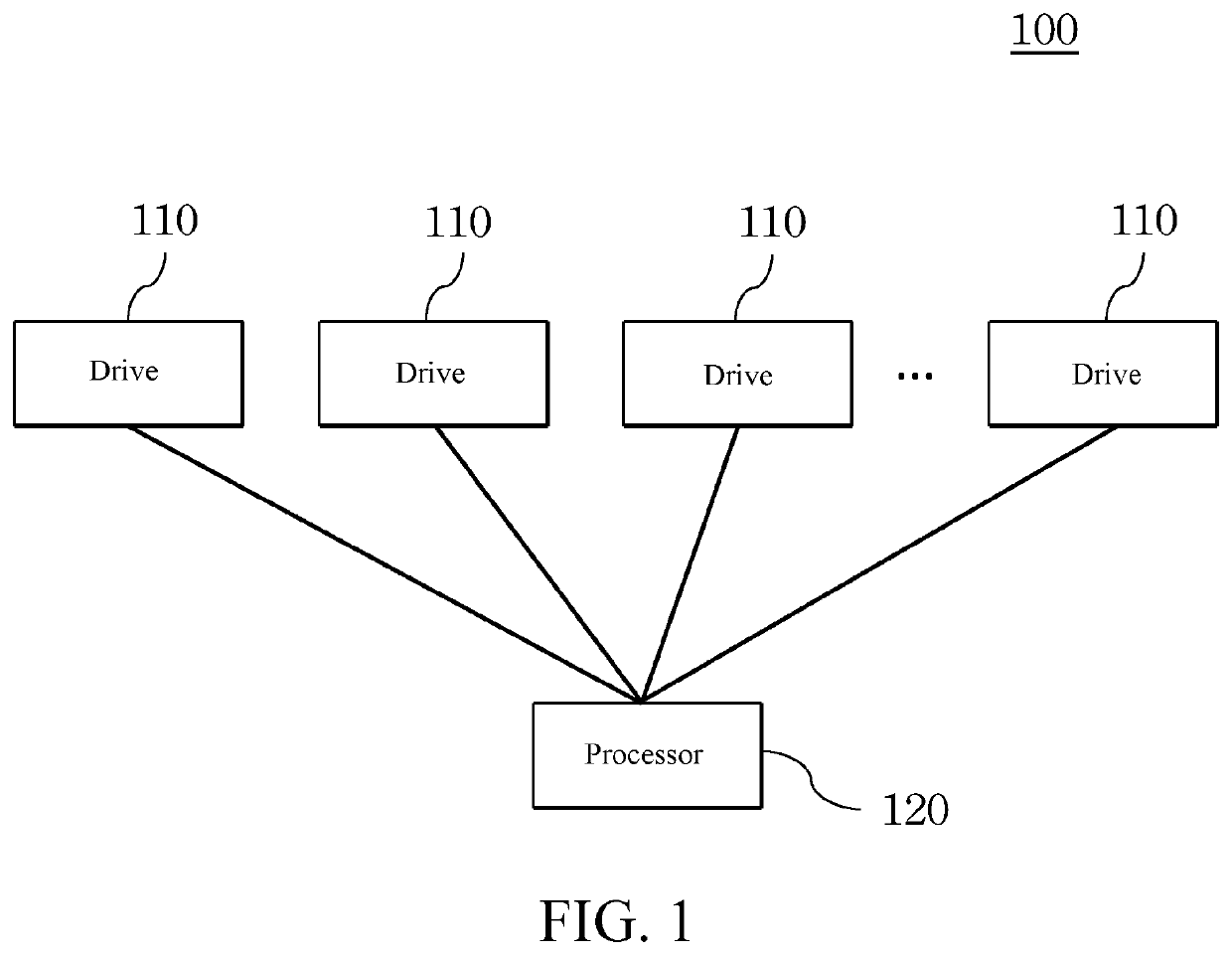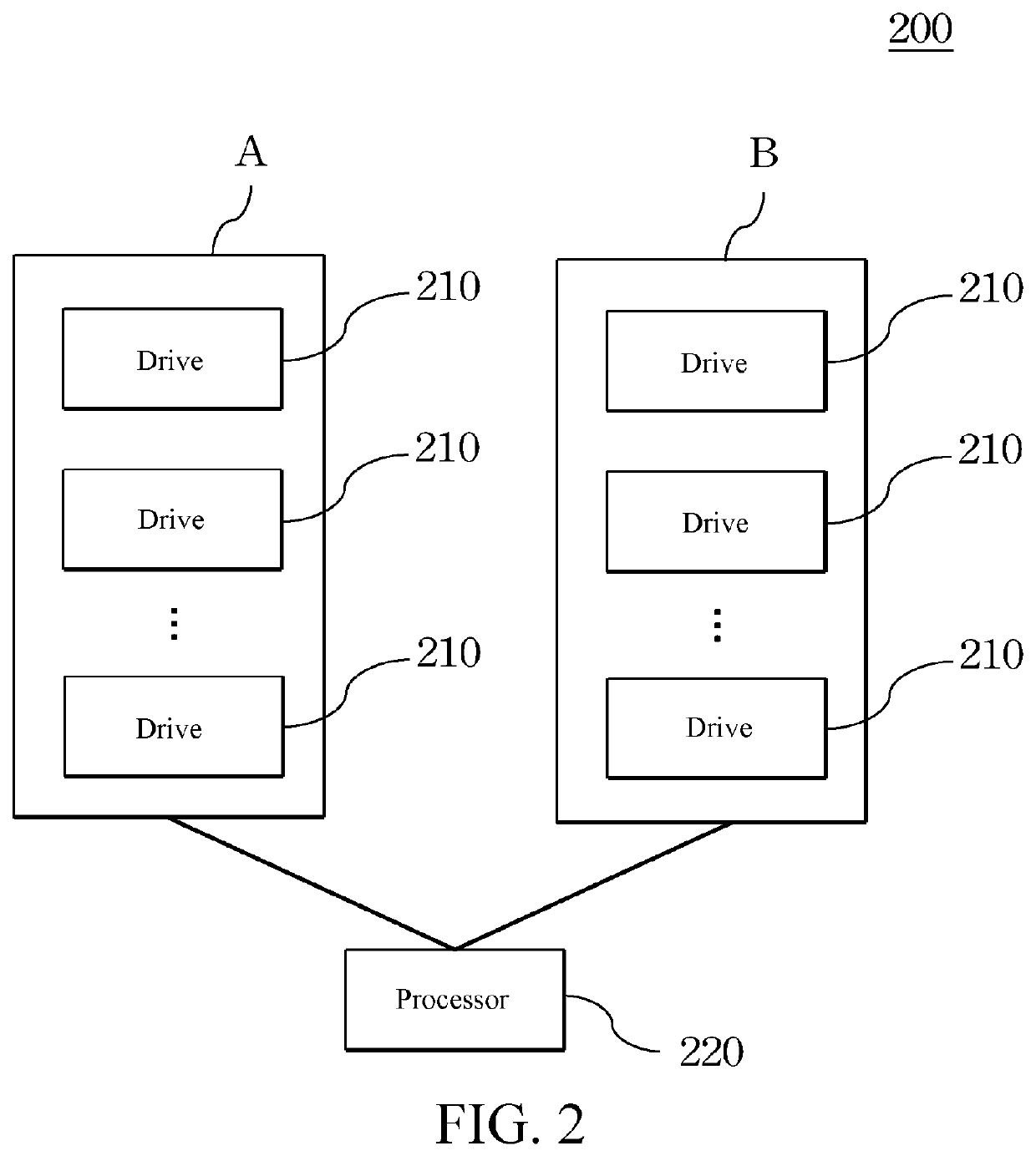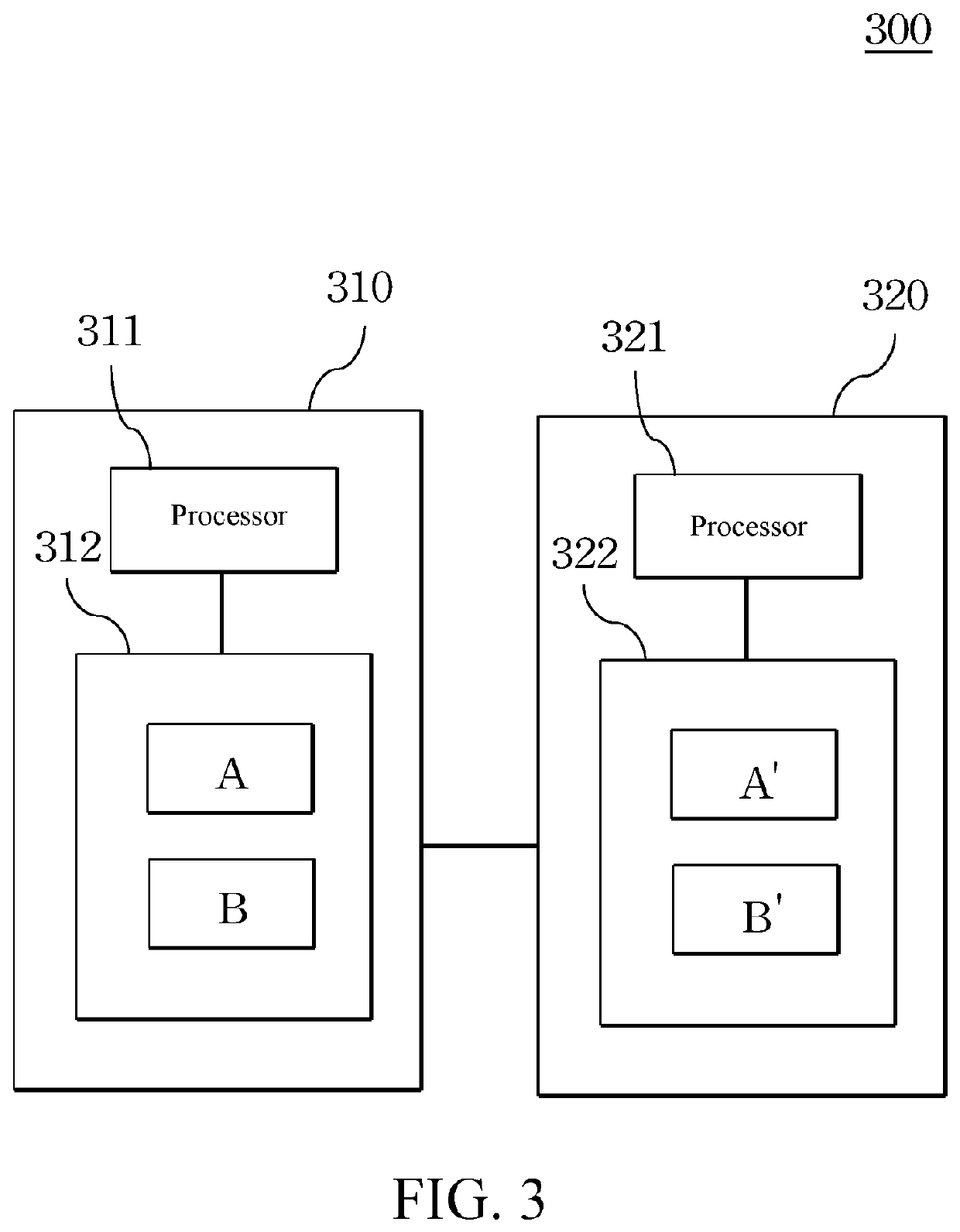Data recovery method for RAID system
a data recovery and raid system technology, applied in the field of storage technology, can solve the problems of taking a substantial time to read data from and write data to the drives, and still taking about an hour to read and write data, so as to reduce the time for data recovery
- Summary
- Abstract
- Description
- Claims
- Application Information
AI Technical Summary
Benefits of technology
Problems solved by technology
Method used
Image
Examples
first embodiment
[0015]FIG. 1 is a schematic architectural diagram of a RAID system 100 according to the present disclosure. The RAID system 100 includes a plurality of drives 110 and a processor 120 connected to the drives 110, and in addition further includes an access interface, a memory, and the like. Details are not described herein. The drive 110 may be a conventional hard disk drive (HDD) or an SSD. The processor 120 is a processing unit capable of executing computer instructions and performing operations.
[0016]Referring to Table 1, a RAID that is formed by eight drives 110 (D1 to D8) is used for description. Herein, for example, the RAID is a RAID level 4. However, the present invention is not limited thereto. The drives 110 may be alternatively applied to a RAID level 5 or even a RAID level 6. Herein, the drive D8 is a parity drive. The drives D1 to D8 form a plurality of data strips over the drives D1 to D8 through stripping processing. Herein, six data strips are used as an example for de...
second embodiment
[0025]FIG. 2 is a schematic architectural diagram of a RAID system 200 according to the present disclosure. The RAID system 200 includes a plurality of drives 210 and a processor 220 connected to the drives 210, and in addition further includes an access interface, a memory, and the like. Details are not described herein. The drive 210 may be a conventional HDD or an SSD. The processor 220 is a processing unit capable of executing computer instructions and performing operations. Herein, the drives 210 are grouped into two groups, one group of drives 210 form a first RAID A, and the other group of drives 210 form a second RAID B.
[0026]Referring to Table 3, one RAID that is formed by eight drives 210 (D1 to D8) and one RAID that is formed by eight drives 210 (D9 to D16) are used for description. Herein, for stripping and log-based writing in a RAID, refer to the description of the foregoing first embodiment. Details are not repeated herein again. Data is stored on data strips S1 and S...
third embodiment
[0033]FIG. 3 is a schematic architectural diagram of a RAID system 300 according to the present disclosure. The RAID system 300 is a high availability (HA) cluster. That is, the RAID system 300 includes a first RAID 310 and a second RAID 320 that are mirrors of each other. The first RAID 310 include a first data pool 312 and a processor 311 connected to the first data pool 312. The first data pool 312 includes the foregoing first RAID A and second RAID B. Therefore, the stored data is the same as that listed in Table 3. The second RAID 320 includes a second data pool 322 and a processor 321 connected to the second data pool 322. The second data pool 322 includes a first RAID A′ that stores data the same as that in the first RAID A, and a second RAID B′ that stores data the same as that in the second RAID B. The data is therefore not otherwise listed. In some embodiments, each of the first data pool 312 and the second data pool 322 may alternatively include only one RAID. In some emb...
PUM
 Login to View More
Login to View More Abstract
Description
Claims
Application Information
 Login to View More
Login to View More - R&D
- Intellectual Property
- Life Sciences
- Materials
- Tech Scout
- Unparalleled Data Quality
- Higher Quality Content
- 60% Fewer Hallucinations
Browse by: Latest US Patents, China's latest patents, Technical Efficacy Thesaurus, Application Domain, Technology Topic, Popular Technical Reports.
© 2025 PatSnap. All rights reserved.Legal|Privacy policy|Modern Slavery Act Transparency Statement|Sitemap|About US| Contact US: help@patsnap.com



